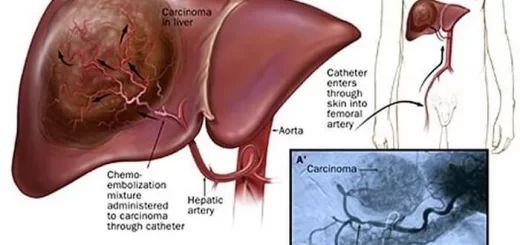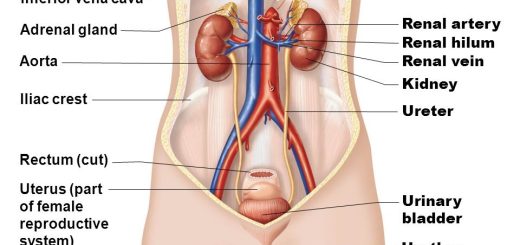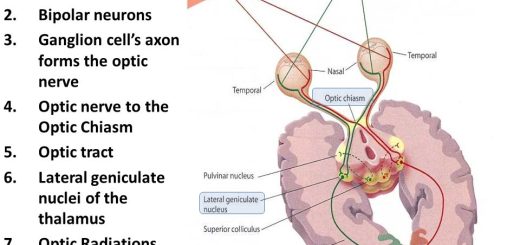Trachea, Major Bronchi, Thoracic cavity structure, function and anatomy
The trachea is commonly known as the windpipe, It is a cartilaginous tube, It connects the larynx to the bronchi of the lungs, It allows the passage of air, It is composed of about 20 rings of tough cartilage, the back part of each ring is made of muscle and connective tissue. It divides into two smaller tubes called bronchi: one bronchus for each lung.
Trachea
The trachea is a tube about 4 inches long and less than an inch in diameter in most people, It begins under the larynx (voice box) and runs down behind the breastbone (sternum).
- Definition: It is a fibro-muscular tube 10 cm long containing incomplete cartilaginous rings.
- Beginning: At the lower border of the cricoid cartilage (at the level of C 6).
- Termination: At the level of T 4 (level of the sternal angle).
- Course: It begins in the midline and terminates slightly to the right of the midline. It lies in the superior mediastinum.
Blood supply:
- Inferior thyroid arteries.
- Bronchial arteries from the descending thoracic aorta (left side)
- Right superior Intercostal artery (right side). It is drained by the inferior thyroid veins.
Nerve supply:
- Sympathetic …………………. Sympathetic trunk.
- Parasympathetic …………… Vagi nerves.
Relations:
- Anterior: Innominate artery, left innominate vein, and thymus gland
- Posterior: Oesophagus and recurrent laryngeal nerve.
- Right: Right vagus, arch of the azygos, right lung, and pleura.
- Left: Arch of the aorta, left common carotid and subclavian arteries, left vagus, and phrenic nerves.
Bronchi: The trachea terminates at the level of T4 by dividing into right and left main bronchi which are asymmetrical.
Differences between right and left bronchi
Right Main Bronchus:
- Shorter (1 inch).
- Wider.
- More in line with the trachea.
- Divides before its entry into the lung into eparterial and hyparterial bronchi.
Left Main Bronchus:
- Longer (2 inches).
- Narrower.
- More horizontal.
- Divides inside the lungs.
The trachea divides into right and left main bronchi, with more division of the main bronchi it gives rise to lobar then segmental bronchi. Each segmental bronchus is distributed to a localized part of lung tissue forming what is called the broncho-pulmonary segments.
The left bronchus divides into superior and inferior lobar bronchi. Each lobar bronchus is divided into segmental bronchi. The right bronchus divides into:
- superior lobar bronchus and
- middle and inferior lobar bronchus.
Trachea and Major Bronchi
Divisions of the bronchial tree:
- Superior lobar bronchus: Right bronchus: Apical, Anterior, and Posterior. Left bronchus: Apicoposterior, Anterior, Sup. lingular, and Inf. lingular.
- Middle lobar bronchus: Right bronchus: Medial, Lateral.
- Inferior lobar bronchus: Right bronchus: Apical basal, Medial basal, Lateral basal, Anterior basal, Posterior basal. Left bronchus: Apical basal, Lateral basal, Anteromedial basal, Posterior basal.
Thoracic Cavity
The thoracic cavity consists of:
- Lung and its pleura: on each side.
- Mediastinum: In the middle part. It contains the heart, great vessels, and other structures.
Pleura
It is a closed serous sac that is invaginated by the lung from its medial side.
Layers:
- Visceral layer: Lines the surfaces and fissures of the lung.
- Parietal layer: Lines the thoracic wall and other structures. Between both layers, there is a small space called the pleural which contains a minimal amount of serous fluid.
Parts of the parietal pleura
- Cervical pleura: protrudes through the thoracic inlet to the neck.
- Costo-vertebral pleura: covers the inner aspect of the thoracic wall.
- Mediastinal pleura: covers the side of the mediastinum.
- Diaphragmatic pleura: covers the upper surface of the diaphragm.
Suprapleural membrane
The cervical pleura is covered by a fibrous membrane spreading fanwise from the seventh cervical transverse process to the inner border of the first rib.
Pleural recesses:
- Costo-mediastinal Recess lies behind the sternum between the front of the thoracic wall and the mediastinum along the anterior margin of the pleura.
- Costo-diaphragmatic Recess lies between the thoracic wall and the diaphragm along the lower margin of the pleura.
Rt. Lung & pleura
apex:
- Rt. Lung: 1/2 inch above the medial 1/3 of the clavicle.
- Rt. Pleura: one inch above the medial 1/3 of the clavicle.
Anterior border:
- Rt. Lung: Descends behind sternoclavicular joint, reaches the sternal angle and takes a straight course from the 2nd to the 6th ribs.
- Rt. Pleura: Descends behind sternoclavicular joint, reaches the midline at the sternal angle and takes a straight course from the 2nd to the 6th ribs.
Lower border:
- Rt. Lung: cuts at midclavicular line 6th rib. cuts at mid-axillary line 8th rib, and cuts at vertebral line 10th Spine.
- Rt. Pleura: At mid-clavicular line cuts 8th rib, at mid-axillary line cuts 10th rib, and at vertebral line cuts 12th the spine.
Posterior border:
- Rt. Lung: It follows the vertebral line from the apex to the 10th thoracic Vertebra.
- Rt. Pleura: It follows the vertebral line from the apex to the 12th thoracic spine.
Oblique fissure: Rt. Lung: From the 3rd spine to the 6th costochondral junction in the mid-clavicular line.
Horizontal fissure: Rt. Lung: It corresponds to the 4th rib.
Lt. Lung & pleura
apex:
- Lt. Lung: 1/2 Inch above the medial 1/3 of the clavicle.
- Lt. Pleura: one Inch above the medial 1/3 of the clavicle.
Anterior border:
- Lt. Lung: descends behind the sternoclavicular joint. It reaches the sternal angle. It descends straight till the 4th Ribs. It deviates to the Lt. side forming the cardiac notch from rib 4 to rib 6.
- Lt. Pleura: Descends behind sternoclavicular joint, reaches the midline at the sternal angle and takes a straight course from the 2nd to the 6th ribs.
Lower border:
- Lt. Lung: cuts at mid-clavicular line 6th rib, cuts at mid-axillary line 8th rib, and cuts at vertebral line 6th rib.
- Lt. Pleura: At mid-clavicular line cuts 8th rib. At mid-axillary line cuts the 10th rib, At vertebral line cuts the 12th the spine.
Posterior border:
- Lt. Lung: It follows the vertebral line from the apex to the 10th thoracic Vertebra.
- Lt. Pleura: It follows the vertebral line from the apex to the 12th thoracic spine.
Oblique fissure: Lt. Lung: From the 3rd spine to the 6th costochondral junction in the mid-clavicular line.
Horizontal fissure: Lt. Lung: It corresponds to the 4th rib.
Nerve supply of the pleura
- Costal pleura and peripheral diaphragmatic pleura: Intercostal nerves.
- Mediastinal and central diaphragmatic pleura: Phrenic nerves.
Arterial supply of the pleura
- Intercostal arteries.
- Internal thoracic artery.
- Musculo-phrenic and pericardiaco-phrenic arteries.
- Pain due to irritation of the costal and peripheral diaphragmatic pleura is referred to the thoracic or abdominal walls along the intercostal nerves.
- Pain due to irritation of the mediastinal and central diaphragmatic pleura is referred to as the root of the neck and shoulder because they are supplied by the same spinal segments through the supra-clavicular nerves (C. 3, 4).
Larynx structure, function, cartilages, muscles, blood supply & vocal folds
Anatomy of nose, function of para-nasal air sinuses and Sphenopalatine Ganglion branches
Diaphragm anatomy, structure, function, Phrenic nerves and Nerves of the thorax
Respiratory Chain Electron Transport Chain (ETC) components, control and inhibitors
Thoracic vertebrae structure, function, Chest wall muscles and Intercostal arteries



